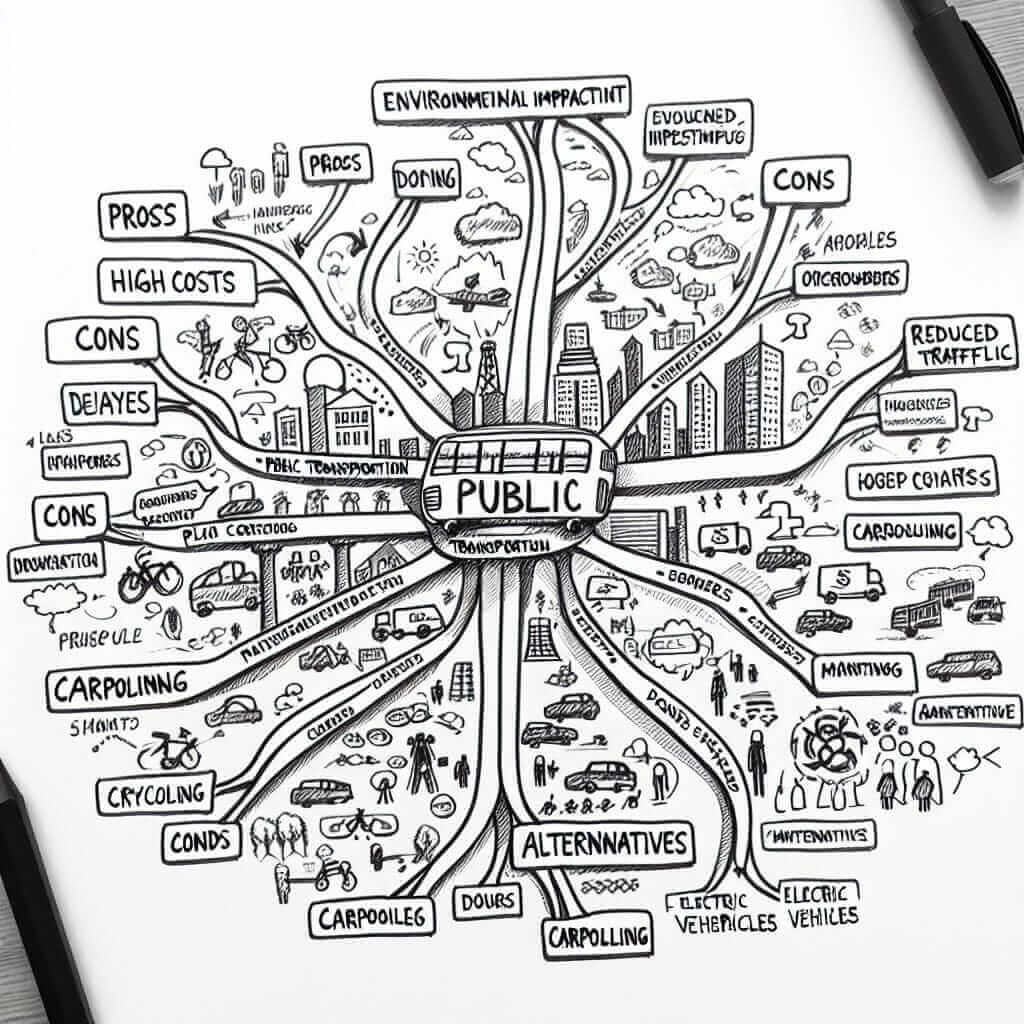The IELTS Writing test can feel like a daunting mountain to climb, especially when faced with a blank page and a ticking clock. But fear not, aspiring wordsmiths! One of the keys to unlocking your writing potential lies in mastering the art of brainstorming. Effective brainstorming is not just about jotting down the first things that come to mind; it’s about strategically exploring the topic and unearthing those golden nuggets of ideas that will make your essays shine.
Why is Brainstorming Crucial for IELTS Writing?
Brainstorming is the compass that guides your writing journey. It helps you:
- Understand the Task: Dissecting the question and identifying key words will give you a clearer picture of what the examiner expects.
- Generate Ideas: Think of it as a mental treasure hunt. Brainstorming helps you unearth relevant points and supporting evidence for your essay.
- Organize Your Thoughts: A good brainstorming session provides a framework for your essay, making your writing more coherent and structured.
- Overcome Writer’s Block: Staring at a blank page can be intimidating. Brainstorming gets those creative juices flowing and helps you overcome initial hesitation.
Effective Brainstorming Techniques for IELTS Writing
Now that you understand the “why,” let’s delve into the “how.” Here are some proven brainstorming techniques tailored for the IELTS Writing test:
1. Mind Mapping:
This visual technique helps you branch out from the main topic and explore related concepts.
- Start with the Keyword: Write the central theme or keyword in the center of your page.
- Branch Out: Draw lines radiating outwards, each representing a different aspect or idea related to the central topic.
- Add Sub-Branches: Further develop each branch with supporting arguments, examples, or personal experiences.
Example:
Let’s say the essay question is: “Some people believe that the government should invest in public transportation, while others think that it is a waste of money. Discuss both views and give your own opinion.“

Your mind map could have branches for:
- Benefits of Public Transportation: Environmental impact, reduced traffic congestion, accessibility for low-income groups.
- Drawbacks of Public Transportation: High initial investment costs, potential for delays and overcrowding, need for ongoing maintenance.
- Alternative Solutions: Promoting cycling infrastructure, carpooling initiatives, investing in electric vehicle charging stations.
2. Questioning:
Challenge yourself with targeted questions to delve deeper into the topic:
- What? What is the main issue being discussed? What are its different aspects?
- Why? Why is this issue important? Why do people have different opinions about it?
- How? How can this issue be addressed? What are the possible solutions?
- Who? Who are the stakeholders affected by this issue?
3. Perspective Taking:
Step into the shoes of different people or groups to generate diverse viewpoints:
- For: List arguments in favor of the given topic or statement.
- Against: Brainstorm counterarguments or opposing viewpoints.
- Neutral: Consider neutral perspectives or potential compromises.
4. The “5Ws and 1H” Method:
This classic journalistic technique helps you gather comprehensive information:
- Who?
- What?
- When?
- Where?
- Why?
- How?
5. Real-Life Examples:
Drawing from current events, historical occurrences, or personal anecdotes can add weight to your arguments.
Turning Ideas into Gold: Tips for IELTS Success
- Time Management: Allocate a specific amount of time for brainstorming before you start writing.
- Quality over Quantity: Focus on generating relevant and well-developed ideas rather than a long list of superficial points.
- Practice Makes Perfect: The more you practice brainstorming, the more instinctive and effective it will become.
- Don’t Be Afraid to Edit: Once you’ve finished brainstorming, take a moment to review and refine your ideas. Eliminate any irrelevant or weak points.
Conclusion
Mastering the art of brainstorming is like acquiring a secret weapon for your IELTS Writing test. By employing these techniques, you’ll be well-equipped to generate impactful ideas, structure your essays effectively, and ultimately, achieve your desired score. Remember, the key is to practice regularly and tailor these techniques to your individual needs and learning style. Good luck, and may your IELTS writing be filled with clarity, coherence, and creativity!